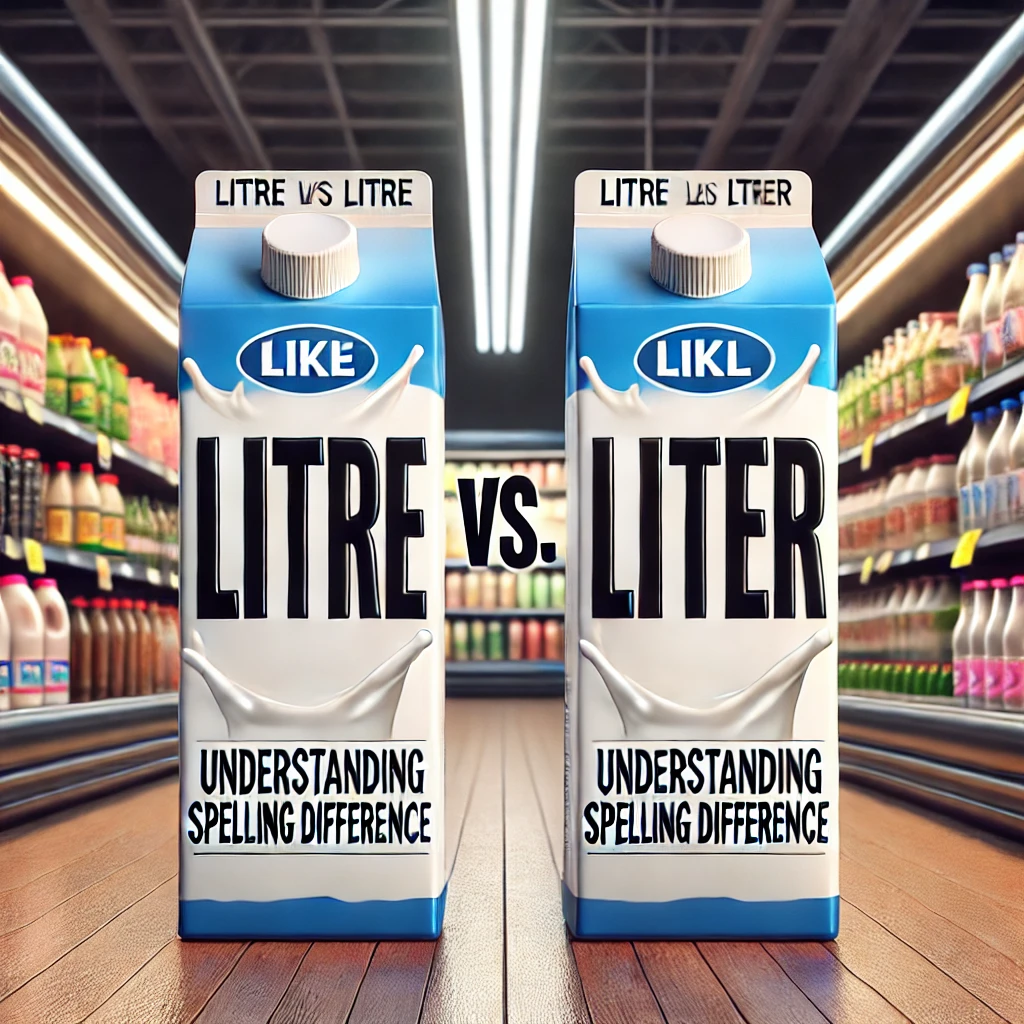Introduction
Is it “litre” or “liter”? If you’ve ever been confused about this spelling difference, you’re not alone. This variation stems from regional language differences between British English and American English. While both spellings “litre” vs “liter” refer to the same unit of volume measurement, their usage “litre” or “liter” depends on the country and context.
In this article, we’ll break down why these spelling differences exist, their historical roots, and how they impact everyday measurements, scientific writing, and international contexts. Whether you’re writing a research paper or just checking product labels, understanding these nuances will help you use the correct spelling every time.
Regional Language Differences
English is spoken across multiple countries, but it doesn’t always look the same. Language variation occurs due to historical influences, cultural shifts, and even political decisions. Words like “colour” vs. “color” or “theatre” vs. “theater” are common examples of spelling discrepancies that exist between regions.
The debate over “litre” vs. “liter” falls into this category. But why do these differences exist in the first place?
British English: Why “Litre” is Used
In British English, “litre” is the correct spelling. This follows traditional British spelling rules, which often retain older linguistic forms. The UK, along with Commonwealth English nations like Canada and Australia, officially recognizes “litre” as the standard spelling.
Why does British English use “litre”?
- French Influence: The word “litre” originates from the French “litron,” which was adopted into English in the 18th century.
- Linguistic Roots: Many words in British English maintain their French origins, such as “centre,” “metre,” and “theatre.”
- Metric System Adoption: The UK follows international metric system standards, which officially use “litre.”
American English: Why “Liter” is Preferred
In American English, “liter” is the standard spelling. This change was largely driven by Noah Webster, an American lexicographer who aimed to simplify spelling for consistency.
Why does American English use “liter”?
- Spelling Reform: Webster’s spelling standardization removed unnecessary letters (e.g., “color” instead of “colour”).
- Phonetic Influence: The “-er” ending better matches American pronunciation patterns.
- Scientific Standardization: The US adopted “liter” in official scientific publications and government usage.
Spelling Differences in Everyday Use
So, where do you encounter “litre” vs. “liter” in daily life? Here are some key areas:
| Context | British English (Litre) | American English (Liter) |
|---|---|---|
| Product Labels | “2 litres of water” | “2 liters of water” |
| Road Signs | “Petrol: 1.50 per litre” | “Gasoline: 1.50 per liter” |
| Restaurant Menus | “500ml = 0.5 litre” | “500ml = 0.5 liter” |
| Educational Books | “The litre is an SI unit.” | “The liter is an SI unit.” |
These word usage differences show how spelling adapts to regional dialects and localization needs.
Metric System and Volume Measurement
Both spellings refer to the same metric measurement of volume:
- 1 litre/liter = 1,000 millilitres (ml)
- 1 litre/liter ≈ 1.057 quarts (US)
The metric system is widely used in scientific writing, but regional spelling rules still apply.
Scientific Writing: Which Spelling to Use?
In academia, consistent usage is crucial. Different technical writing guidelines suggest the following:
- British Scientific Journals: Use “litre.”
- American Scientific Papers: Use “liter.”
- International Standards (SI Units): Recommend “litre,” but accept “liter” for U.S. publications.
For formal research papers or scholarly writing, check your institution’s style guide to ensure correctness.
Read More About This Article: Past Tense of Swing: Is It Swing, Swang, or Swung?
Language Standardization and Global Usage
Efforts toward language standardization have tried to create uniformity, but spelling differences persist. International companies and organizations must adjust their spelling based on audience location.
Example: Coca-Cola’s Labeling Strategy
- UK & Canada: “500ml Litre”
- USA: “500ml Liter”
- Europe: Uses “Litre” for compliance with SI unit rules.
For global brands, coherent usage helps maintain consistency across markets.
French Influence on the Word “Litre”
The word “litre” has strong French roots:
- Originates from the French “litron”, a liquid measure used in the 17th century.
- Derived from Greek “litra”, meaning weight or measurement.
- Entered English during the metric system’s introduction.
This Gallic influence is why “litre” aligns with other metric-based spellings.
International Contexts: When to Use Litre vs. Liter
In multinational scenarios, knowing the correct spelling can prevent confusion. Here’s when to use each:
- Writing for a British or Commonwealth Audience? Use “litre.”
- Targeting American Readers? Use “liter.”
- Scientific or Technical Documents? Follow SI conventions but consider regional standards.
- Global Business Communication? Adjust spelling based on market preferences.
Understanding these cross-cultural situations ensures clear and professional communication.
Conclusion
The “litre” vs. “liter” debate is a classic example of spelling differences shaped by regional language differences, historical influences, and the need for language standardization. While both spellings are correct, their usage depends on context.
Key Takeaways
- “Litre” is used in British English and Commonwealth nations.
- “Liter” is the preferred spelling in American English.
- The metric system officially recognizes “litre,” but U.S. publications use “liter.”
- In scientific writing, consistency is key—follow regional style guides.
- Global businesses adapt spelling based on international markets.
By understanding these nuances, you can ensure consistent usage in writing, research, and everyday life. Whether you write “litre” or “liter,” you now know exactly why the difference exists!
